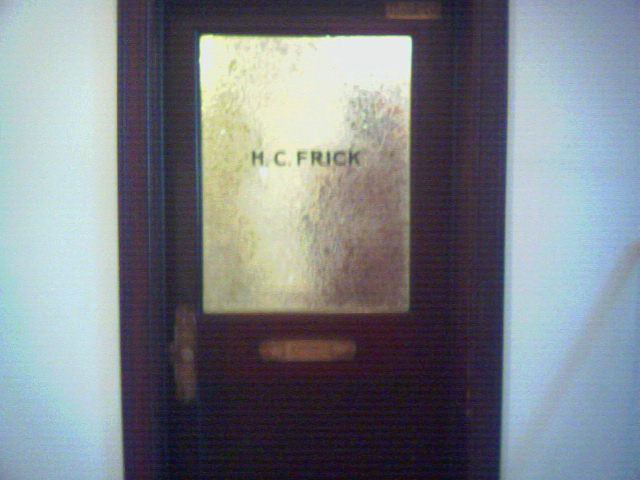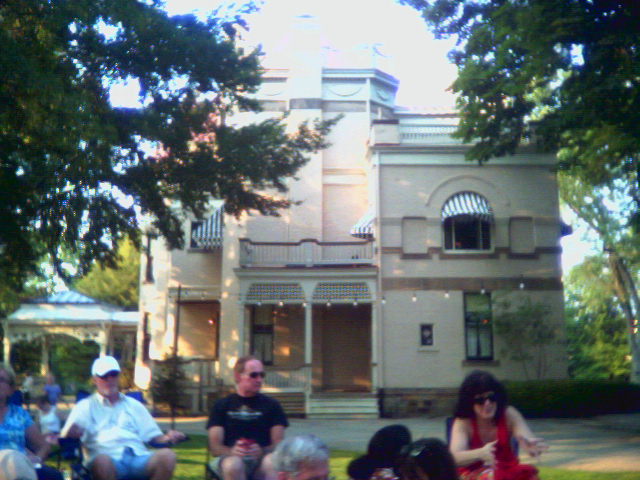"Doorknob to desk."
I’ve been using the term for years, but what does it mean, really? The simple answer is that it measures my travel time, my commute, from the time I leave my house to the time I reach my desk, ready to do work. It’s what’s implied that makes it less simple. By employing this obvious simplicity, I reduce all the variables concerning travel time of one’s method of travel to a single integer.
Going by car? You had to scrape the frost off the window, shovel the driveway, stop for gas, find a parking space, and walk from that spot to your place of employment. Going by bus? You had walking time to get to the stop, some minutes to wait for it to arrive, perhaps make a transfer with its own travel and wait. Going by bike? Fill tires and secure load before getting underway, then lockup and maybe a quick wipedown or change of clothes upon arrival.
What it also accomplishes is to eliminate bias. As a transit rider, car commuters routinely ask, “How long does it take you to get here by bus?” Implied in that question lies a bias that travel time is of utmost importance. I want to respond with a question of my own, “Why would that matter?” But I reply with a simple question: "Of course going by car might take less time, but it also costs me $14/day to park, and I have better things to do with a couple hundred a month. What do you value?"
In offering an integer for my travel time by bus or bike, I often get the reply, “Ha! I can get here in only 20 minutes!” In so doing, they measure a best case scenario, and then only the time from the moment a tire hits a road to the time they pull into the parking lot, as if all that other stuff on both ends doesn’t count. But it does. Worse, the majority of people I’ve conversed with, hundreds over 20+ years, employ a best-case scenario that involves no traffic lights, no traffic, and traveling 10 mph over the speed limit.
Doorknob to desk, at or below the speed limit, with car prep, fueling, scraping, shoveling, and parking issues included, levels the playing field, making those travel times comparable.
What D-to-D does not do is attempt to compare the subjective values of differing travel modes. A transit user can take a nap, but a driver and cyclist cannot. A transit rider can skip the snow shovel, read a book, send a text, and get work done on the way, something a motorist cannot do. A bicyclist is getting a workout and pays no travel cost, but is subjected to the elements. A motorist has great comfort, but at an order of magnitude greater cost. Being subjective, each person will value all these differently, and that’s fine.
This one measure, though, merely reduces travel time to a single value. Do with it what you will. I no longer value the shortest travel time as important. For me, cost is a big factor, so is personal health. Changing my mind on these has let me look at life differently from when I was one of those maniacs behind the wheel. It’s only a number, but you have to start somewhere.
Friday, August 24, 2012
Saturday, August 4, 2012
H.C. Frick never foresaw this
I work in Henry Clay Frick's building in downtown Pittsburgh. The first Friday of every summer month, the Frick Art & Historical Society holds a(n essentially) free concert on the lawn of Clayton, Frick's mansion. Tonight, I traveled from one to the other, effectively replicating old man Frick's commute home. I bet he never figured to make the trip the way I did.
We would have started the same way. Here is the view from the elevator: Henry Clay Frick's office door, now the door to the company mail room, supply closet, and kitchenette. I took the elevator down from 20 and walked out onto Fifth Avenue, just like he did. I then walked over to the Liberty/Smithfield parking garage, where I had the bicycle tied up, and rode over to Grant Street, by U.S. Steel Tower. In fewer than five minutes, the bike and I were on an articulated bus, an express trip out the East Busway. In 15 minutes, I was off the bus at Homewood Avenue, unmounted the bike from the bus rack, and descended the steps. Clayton is a mere three blocks from the busway station. In just a couple of minutes on the bike, I was here:
I took the elevator down from 20 and walked out onto Fifth Avenue, just like he did. I then walked over to the Liberty/Smithfield parking garage, where I had the bicycle tied up, and rode over to Grant Street, by U.S. Steel Tower. In fewer than five minutes, the bike and I were on an articulated bus, an express trip out the East Busway. In 15 minutes, I was off the bus at Homewood Avenue, unmounted the bike from the bus rack, and descended the steps. Clayton is a mere three blocks from the busway station. In just a couple of minutes on the bike, I was here:
South view of Clayton, the H.C. Frick mansion, during The Bobs' concert, Aug 3 2012.
The trip from desk to (essentially) doorknob took only 38 minutes. I am guessing Frick himself never made it that quickly, and I wasn't even hurrying. In fact, I waited out lights at Wm Penn Way, Grant Street, and Penn Avenue, though I got the light at Thomas Boulevard green.
The truth be told, though, I don't know how Frick commuted. Possibly he had a driver to carry him back and forth on city streets. Maybe he used the trolley; I doubt it. For all I know, he had a private streetcar. I'm pretty sure he didn't do it by horse or bicycle, though he may have been able to drive it himself. He died in 1919. To this day there is a museum of antique cars on the Clayton grounds, worthy of a look to see how the upper-crust of Pittsburgh society got around 100 years ago.
Endnotes
Here are a couple of links about Frick:
We would have started the same way. Here is the view from the elevator: Henry Clay Frick's office door, now the door to the company mail room, supply closet, and kitchenette.
 I took the elevator down from 20 and walked out onto Fifth Avenue, just like he did. I then walked over to the Liberty/Smithfield parking garage, where I had the bicycle tied up, and rode over to Grant Street, by U.S. Steel Tower. In fewer than five minutes, the bike and I were on an articulated bus, an express trip out the East Busway. In 15 minutes, I was off the bus at Homewood Avenue, unmounted the bike from the bus rack, and descended the steps. Clayton is a mere three blocks from the busway station. In just a couple of minutes on the bike, I was here:
I took the elevator down from 20 and walked out onto Fifth Avenue, just like he did. I then walked over to the Liberty/Smithfield parking garage, where I had the bicycle tied up, and rode over to Grant Street, by U.S. Steel Tower. In fewer than five minutes, the bike and I were on an articulated bus, an express trip out the East Busway. In 15 minutes, I was off the bus at Homewood Avenue, unmounted the bike from the bus rack, and descended the steps. Clayton is a mere three blocks from the busway station. In just a couple of minutes on the bike, I was here:South view of Clayton, the H.C. Frick mansion, during The Bobs' concert, Aug 3 2012.

The trip from desk to (essentially) doorknob took only 38 minutes. I am guessing Frick himself never made it that quickly, and I wasn't even hurrying. In fact, I waited out lights at Wm Penn Way, Grant Street, and Penn Avenue, though I got the light at Thomas Boulevard green.
The truth be told, though, I don't know how Frick commuted. Possibly he had a driver to carry him back and forth on city streets. Maybe he used the trolley; I doubt it. For all I know, he had a private streetcar. I'm pretty sure he didn't do it by horse or bicycle, though he may have been able to drive it himself. He died in 1919. To this day there is a museum of antique cars on the Clayton grounds, worthy of a look to see how the upper-crust of Pittsburgh society got around 100 years ago.
Endnotes
Here are a couple of links about Frick:
Subscribe to:
Posts (Atom)